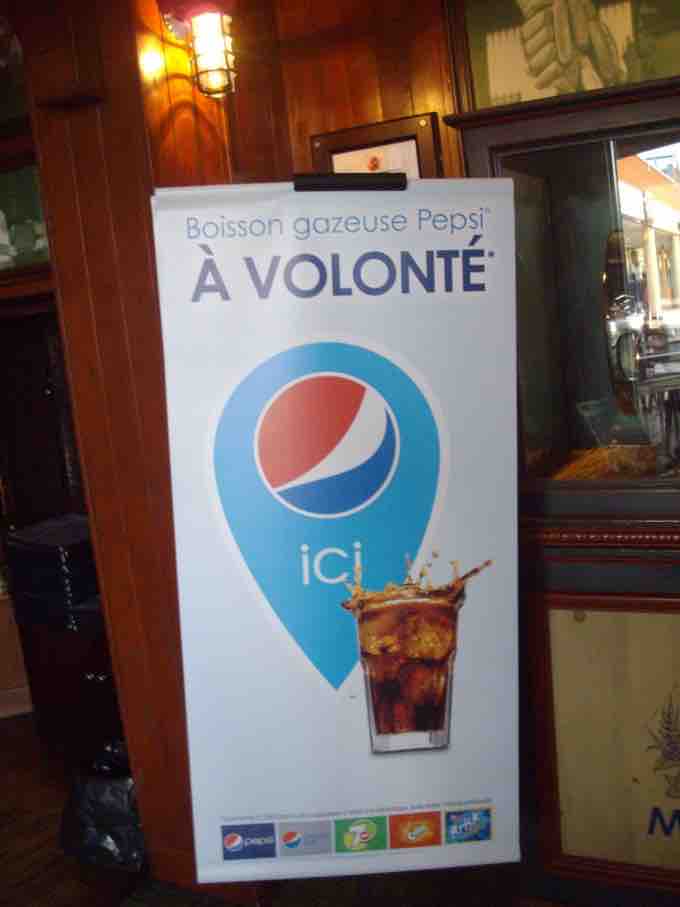Global Marketing Plans
Ultimately, at global marketing level, a company trying to speak with one voice is faced with many challenges when creating a worldwide marketing plan. Unless a company holds the same position against its competition in all markets (market leader, low cost, etc. ), it is impossible to launch identical marketing plans worldwide. When branding and packaging for international products, careful consideration must be placed on factors such as language, colors, customs, aesthetics and placement.
Language
The importance of language differences cannot be overemphasized. There are upwards of 7,000 languages in the world. These differences cause many problems for marketers in designing advertising campaigns and product labels. Language problems become even more serious once the people of a country speak several languages. For example, in Canada, labels must be in both English and French, like this ad for Pepsi in Canada . In India, there are over 200 different dialects, and a similar situation exists in China.

Pepsi Ads in Canada
In Canada, all product labels must appear in both official languages: English and French.
Colors
Colors also have different meanings in different cultures. For example, in Egypt, the country's national color of green is considered unacceptable for packaging, because religious leaders once wore it. In Japan, black and white are colors of mourning and should not be used on a product's package. Similarly, purple is unacceptable in Hispanic nations because it is associated with death.
Customs and Taboos
All cultures have their own unique set of customs and taboos. It is important for marketers to learn about these so that they will know what is acceptable and what is not for their marketing programs.
Aesthetics
The term aesthetics is used to refer to the concepts of beauty and good taste. The phrase, "Beauty is in the eye of the beholder", is a very appropriate description for the differences that exist between cultures. For example, Americans believe that suntans are attractive, youthful, and healthy. However, the Japanese do not. These key differences apply to labels and branding as well.
Placement
How the product is distributed is also a country-by-country decision influenced by how the competition is being offered to the target market. Using Coca-Cola as an example, not all cultures use vending machines. In the United States, beverages are sold by the pallet via warehouse stores. In India, this is not an option. Placement decisions must also consider the product's position in the market place. For example, a high-end product would not want to be distributed via a "dollar store" in the United States. Conversely, a product promoted as the low-cost option in France would find limited success in a pricey boutique.
Effective global advertising techniques do exist. The key is testing advertising ideas using a marketing research system proven to provide results that can be compared across countries. The ability to identify which elements or moments of an ad are contributing to that success is how economies of scale are maximized.